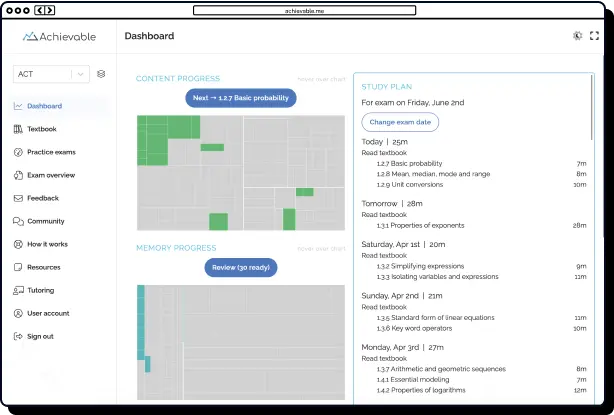
Health insurance 101: Key terms and tips




Table of contents
- Why health insurance coverage matters
- How does health insurance work?
- Key health insurance terms you should know
- Types of health insurance plans
- Employer-sponsored insurance
- Individual or Marketplace Plans
- Government programs
- How health insurance works in practice
- Understanding health insurance networks
- How to choose the right plan for you
- Common mistakes to avoid when choosing health insurance
- Special enrollment, open enrollment, and life changes
- Benefits beyond basic coverage
- The role of health insurance in long-term financial stability
- Final thoughts: Making health insurance work for you
Health insurance can seem complicated, filled with unfamiliar terms, confusing plan options, and numerous choices to consider. At its foundation, health insurance is more than just paperwork: it is a form of protection that helps manage your healthcare costs and provides you with peace of mind, ensuring you won’t have to handle overwhelming medical bills on your own.
Whether you’re choosing your first policy, evaluating the coverage provided by your employer, or preparing for your insurance licensing exam, understanding how health insurance works makes these tasks more approachable. This guide will walk you through health insurance basics step by step, covering everything from common terms to how different plans function, so you feel confident navigating your healthcare options.

Why health insurance coverage matters
Healthcare in the U.S. can be expensive; even a simple doctor visit or emergency room trip can cost hundreds or thousands of dollars. Health insurance acts as a safety net, helping you cover those costs while providing access to quality care when you need it most.
But beyond financial protection, health insurance also ensures you can get preventive care, checkups, vaccines, and screenings that help you stay healthy and detect issues early.
In short, it’s not just about preparing for the unexpected, but about protecting your health and well-being every day.
How does health insurance work?
At its simplest, health insurance starts with a contract between you and your insurance company. You pay a monthly premium, and in exchange, your health insurer helps cover medical expenses when you need care due to illness, injury, or other health needs.
Health insurance relies on the principle of risk sharing. Everyone with a health insurance plan contributes to a common pool through their regular premiums. When a member requires medical treatment, funds from this pool are used to help pay their medical bills.
By spreading the financial risk among many policyholders, insurance works to make healthcare more affordable for individuals. This system protects you from facing the full cost of expensive medical services out of pocket, ensuring that you have financial support when you need treatment or care.
Key health insurance terms you should know
Before diving deeper, it’s important to get familiar with some core health insurance terms you’ll encounter in almost every plan:
- Premium: This term refers to the amount you pay each month to keep your health insurance coverage active. Think of it like a “subscription fee” for your health plan.
- Deductible: The deductible is the amount you’re required to pay out of pocket for covered medical expenses before your health insurance starts paying.
- Example: If your deductible is $1,000, you must pay the first $1,000 of qualifying medical expenses yourself before your health plan offers coverage.
- Copay: In health insurance terminology, a copay is a fixed fee that you pay for specific services or prescriptions each time you visit a doctor or fill a prescription.
- Coinsurance: Another key health insurance term, coinsurance represents the percentage of costs you pay for covered healthcare services after meeting your deductible (for example, you pay 20% of the charges for a hospital visit).
- Out-of-Pocket Maximum: This health insurance term sets the highest total amount you’ll pay in a calendar year for covered medical care. After reaching this limit, your health insurance will cover 100% of eligible costs.
- Network: Refers to the group of doctors, clinics, and hospitals that your health insurance company partners with in order to offer you care at reduced rates using agreed-upon discounts.
These factors all impact your overall healthcare costs, both in routine monthly payments and when you need to access medical services. Understanding these basic health insurance terms helps you make more informed decisions about your plan and what you can expect to pay.

Types of health insurance plans
Health insurance comes in several forms. Understanding the differences helps you choose a plan that fits your needs and lifestyle.
Employer-sponsored insurance
- Offered by your employer as part of your job benefits.
- Your company typically pays part of the premium, and you pay the rest through payroll deductions.
Pros: Usually more affordable, with comprehensive coverage.
Cons: Limited plan choices; coverage ends if you leave the job.
Individual or Marketplace Plans
- Purchased directly from private insurers or through Healthcare.gov.
- These plans are grouped into Bronze, Silver, Gold, and Platinum tiers, based on the cost-sharing arrangement between you and the insurer.
- Bronze: Lower premiums, higher out-of-pocket costs.
- Platinum: Higher premiums, lower costs when you receive care.
- Ideal for self-employed individuals or those without employer-sponsored coverage.
Pros:
- Flexibility to choose your insurer and coverage level.
- Portable, not tied to your job.
Cons:
- Can be costly without subsidies.
- You’ll need to confirm your preferred doctors are in-network.
Government programs
- Medicare: For people aged 65 and older, or those with certain disabilities.
- Medicaid: For individuals and families with limited income.
- CHIP (Children’s Health Insurance Program): Provides coverage for children in families that don’t qualify for Medicaid but still need affordable insurance.
Pros:
- Low or no cost for those who qualify.
- Comprehensive coverage for essential services.
Cons:
- Eligibility is determined by income, age, or disability status.
- Coverage details vary by state.
How health insurance works in practice
Let’s simplify how it all comes together.
Imagine you have a plan with:
- $400 monthly premium
- $1,000 deductible
- 20% coinsurance
- $5,000 out-of-pocket maximum
If you visit a doctor and your total bill is $200:
- You might pay a $25 copay.
- The insurance company pays the rest (if it’s an in-network doctor).
If you have surgery costing $5,000:
- You pay the first $1,000 (your deductible).
- After that, you pay 20% of the remaining cost ($800).
- Your insurer covers the rest.
This continues until you reach your out-of-pocket maximum, after which insurance pays 100% of covered expenses for the rest of the year.
Understanding health insurance networks
Your network matters more than most people realize.
- In-network providers: These are doctors, hospitals, and clinics that have agreed to discounted rates with your insurer. You’ll pay less when you see them.
- Out-of-network providers: These may not be covered or may cost significantly more.
Before scheduling appointments, always confirm whether your provider is in-network, especially for major procedures.
Your Primary Care Provider (PCP) often serves as the first point of contact for your healthcare and can refer you to specialists if needed.

How to choose the right plan for you
Plan technicalities can be confusing, but here’s how to make things simpler:
1. Assess your health needs
- Do you visit doctors often? Take regular prescriptions? Have ongoing conditions?
- If so, a plan with a higher premium but lower out-of-pocket costs might be a better option.
2. Evaluate your budget
- Balance what you can afford monthly (premium) vs. what you could afford in an emergency (deductible).
3. Check the network
- Make sure your preferred doctors, hospitals, and specialists are covered.
4. Review prescription coverage
- Verify that your medications are included in the plan’s formulary.
5. Compare plans side-by-side
- Use the Healthcare.gov or your employer’s comparison tools to view benefits, costs, and ratings clearly.
Common mistakes to avoid when choosing health insurance
Even smart, informed people make mistakes when picking coverage. Avoid these:
- Focusing only on monthly premiums and ignoring deductibles or copays.
- Forgetting to check whether your doctor or hospital is in-network.
- Overlooking drug coverage, especially for ongoing prescriptions.
- Missing the open enrollment deadline and having to wait for the next cycle.
- Not updating your plan after a life event (marriage, job change, or new baby).
Special enrollment, open enrollment, and life changes
There are specific times when you can sign up for or change your health insurance:
- Open Enrollment Period: Happens once a year (usually in the fall). This is when most people can choose or switch plans.
- Special Enrollment Period: If you experience a qualifying life event such as marriage, job loss, moving, or the birth of a child, you can update your coverage outside the normal window.
Always review your options during these periods to ensure your coverage still fits your needs.
Benefits beyond basic coverage
Modern health insurance goes beyond doctor visits. Many plans now include:
- Preventive care: Annual check-ups, vaccines, and screenings at no extra cost.
- Mental health services: Therapy, counseling, and substance use treatment.
- Telehealth: Virtual appointments that save time and travel.
- Wellness programs: Discounts for fitness, nutrition, or stress management.
These benefits encourage you to prioritize your health before problems become severe.
The role of health insurance in long-term financial stability
Without insurance, even a single hospital stay can result in thousands of dollars in debt. With coverage, your insurer shoulders the majority of those costs. It also provides access to regular preventive care, helping catch issues early before they become costly or dangerous. In essence, having insurance supports both your physical and financial health.

Final thoughts: Making health insurance work for you
Understanding how insurance works doesn’t have to be a challenge. Once you break down health insurance 101 into the basics, such as premiums, deductibles, provider networks, and coverage options, managing your plan becomes much easier.
The goal isn’t just to have insurance, but to choose the right health insurance: a policy that fits your health needs, budget, and lifestyle.
Health insurance means gaining peace of mind, knowing that if the unexpected happens, you won’t face major expenses alone. It’s not just a policy: it’s protection, access to care, and reassurance for you and your family.
Because at the end of the day, investing in coverage is the smartest investment you can make for your health and future well-being.

